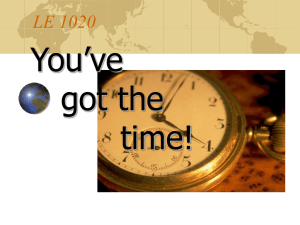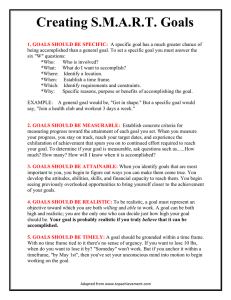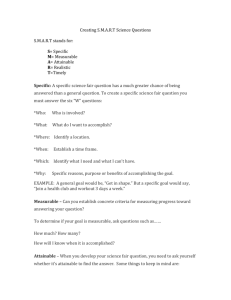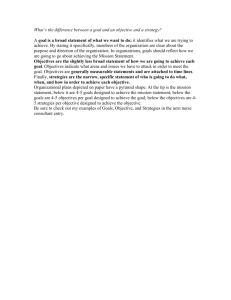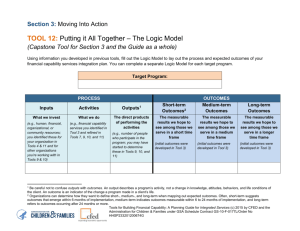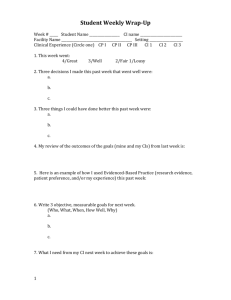Tips for Drafting Quality Goals & Objectives
advertisement
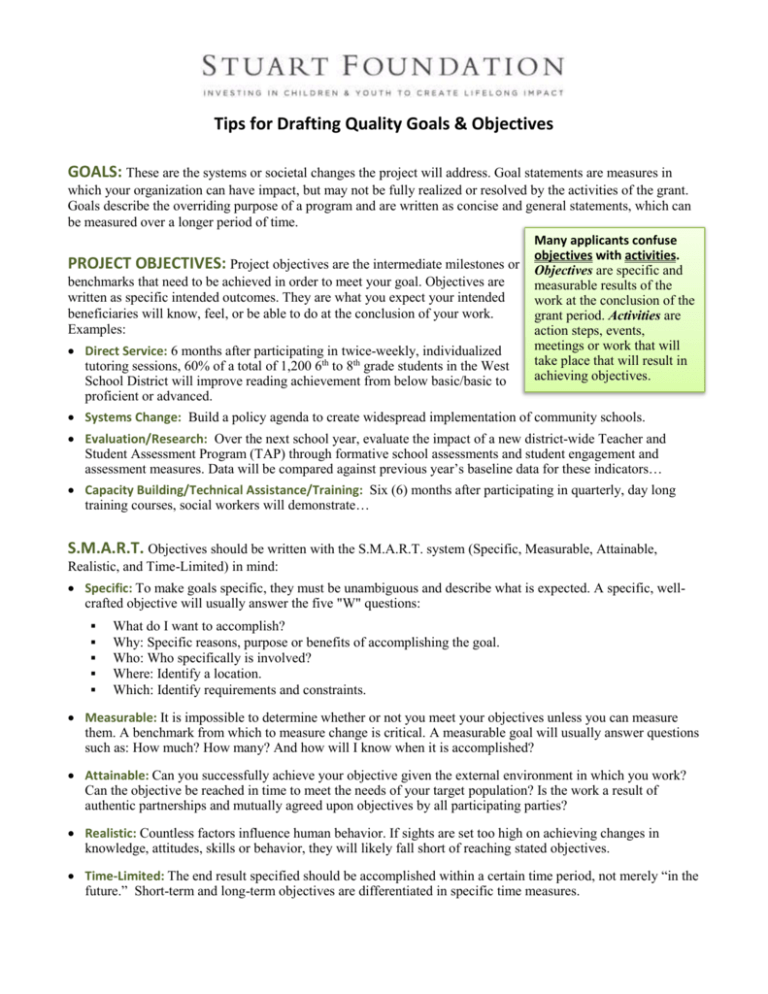
Tips for Drafting Quality Goals & Objectives GOALS: These are the systems or societal changes the project will address. Goal statements are measures in which your organization can have impact, but may not be fully realized or resolved by the activities of the grant. Goals describe the overriding purpose of a program and are written as concise and general statements, which can be measured over a longer period of time. Many applicants confuse objectives with activities. PROJECT OBJECTIVES: Project objectives are the intermediate milestones or Objectives are specific and benchmarks that need to be achieved in order to meet your goal. Objectives are measurable results of the written as specific intended outcomes. They are what you expect your intended work at the conclusion of the beneficiaries will know, feel, or be able to do at the conclusion of your work. grant period. Activities are Examples: action steps, events, meetings or work that will Direct Service: 6 months after participating in twice-weekly, individualized take place that will result in th th tutoring sessions, 60% of a total of 1,200 6 to 8 grade students in the West achieving objectives. School District will improve reading achievement from below basic/basic to proficient or advanced. Systems Change: Build a policy agenda to create widespread implementation of community schools. Evaluation/Research: Over the next school year, evaluate the impact of a new district-wide Teacher and Student Assessment Program (TAP) through formative school assessments and student engagement and assessment measures. Data will be compared against previous year’s baseline data for these indicators… Capacity Building/Technical Assistance/Training: Six (6) months after participating in quarterly, day long training courses, social workers will demonstrate… S.M.A.R.T. Objectives should be written with the S.M.A.R.T. system (Specific, Measurable, Attainable, Realistic, and Time-Limited) in mind: Specific: To make goals specific, they must be unambiguous and describe what is expected. A specific, wellcrafted objective will usually answer the five "W" questions: What do I want to accomplish? Why: Specific reasons, purpose or benefits of accomplishing the goal. Who: Who specifically is involved? Where: Identify a location. Which: Identify requirements and constraints. Measurable: It is impossible to determine whether or not you meet your objectives unless you can measure them. A benchmark from which to measure change is critical. A measurable goal will usually answer questions such as: How much? How many? And how will I know when it is accomplished? Attainable: Can you successfully achieve your objective given the external environment in which you work? Can the objective be reached in time to meet the needs of your target population? Is the work a result of authentic partnerships and mutually agreed upon objectives by all participating parties? Realistic: Countless factors influence human behavior. If sights are set too high on achieving changes in knowledge, attitudes, skills or behavior, they will likely fall short of reaching stated objectives. Time-Limited: The end result specified should be accomplished within a certain time period, not merely “in the future.” Short-term and long-term objectives are differentiated in specific time measures.
